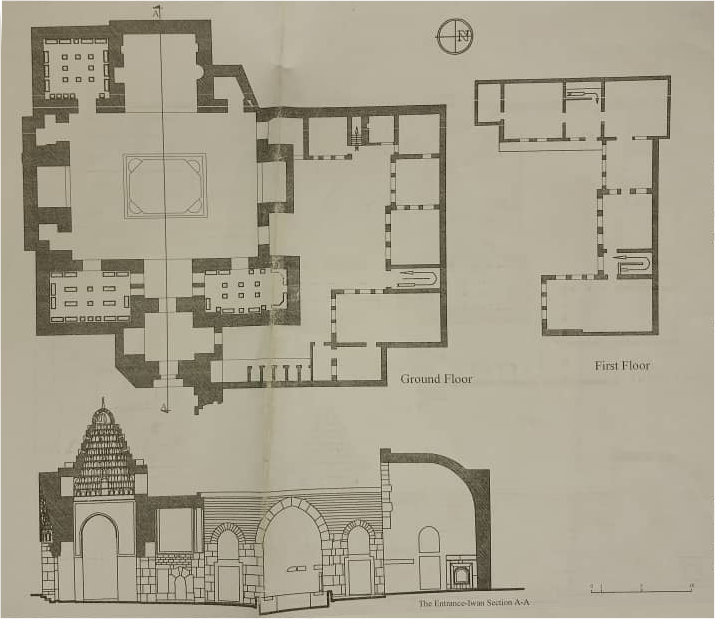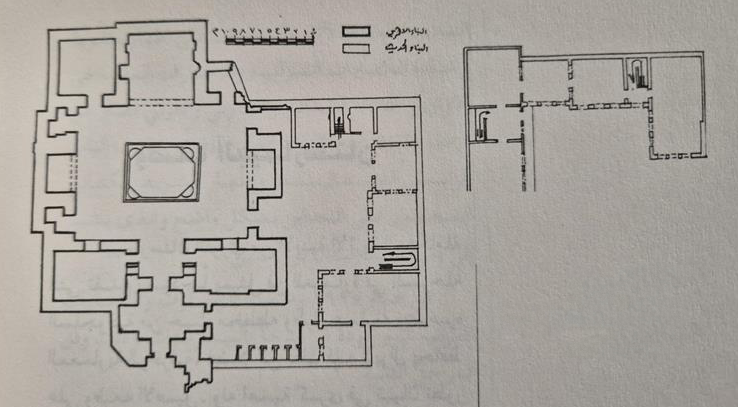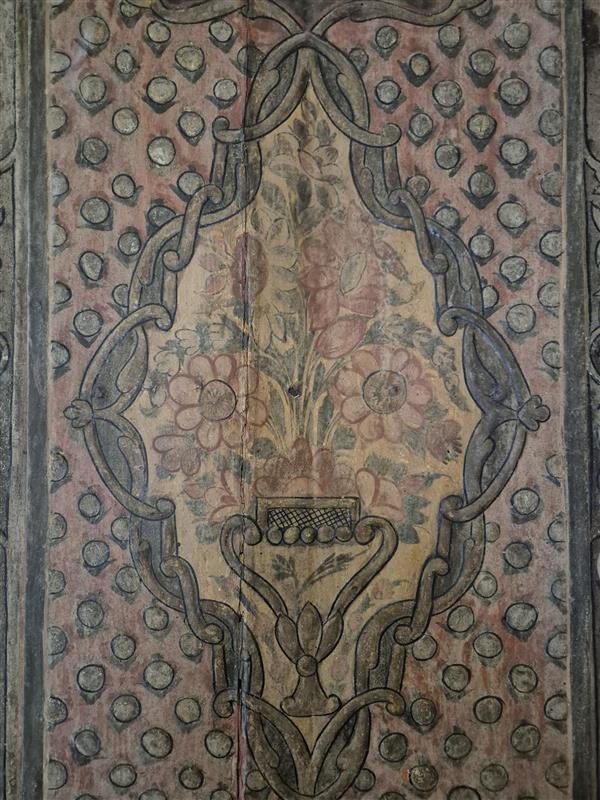Nour al-Din Maristan
1154 AD / Syria
This fabulous maristan was built in 1154 AD (549 AH) by order of Nour al-Din Zengi – a Turkoman member of the Zengid dynasty that ruled the Syrian province of the Seljuk Empire (1037-1194 AD). Nour al-Din also built the maristan in Aleppo 1148-1155 (453-549 AH) which exemplifies the patronage of rulers of the time to provide charitable edifices for caring for the sick. The Nour al-Din maristan of Damascus ran into disrepair but remained largely intact structurally throughout the centuries. With the French colonial Mandate (1923-1945) the building was converted into the Musée de la médecine et des sciences arabes. Remnants of the French era remain on the plaques outside the main entrance and in the display cases inside the maristan.
Architectural Floorplans
These blueprints are from different Arabic sources and they are consistent in showing the central courtyard with the fountain in the middle, plus the iwan and the corner rooms for patients.


Ajami Doors
Indicative of the Persian (ajami) decorative influence, the beautiful wooden door decorations on display at the maristan are found throughout Ottoman era houses in the Old City of Damascus. The ajami doors shown here were not originally in the maristan. There are also other spectacular old palace houses where traditional ajami decoration work is being restored as part of a cultural heritage of Damascus.
